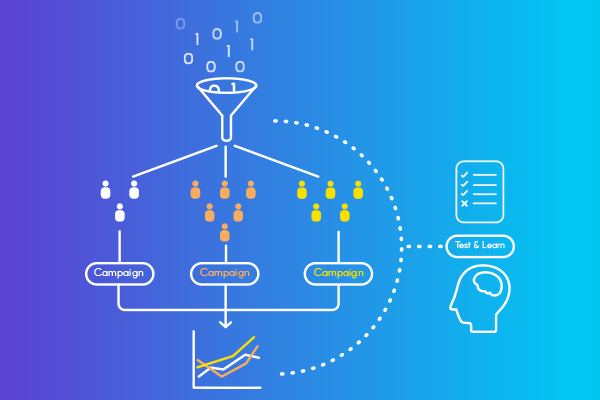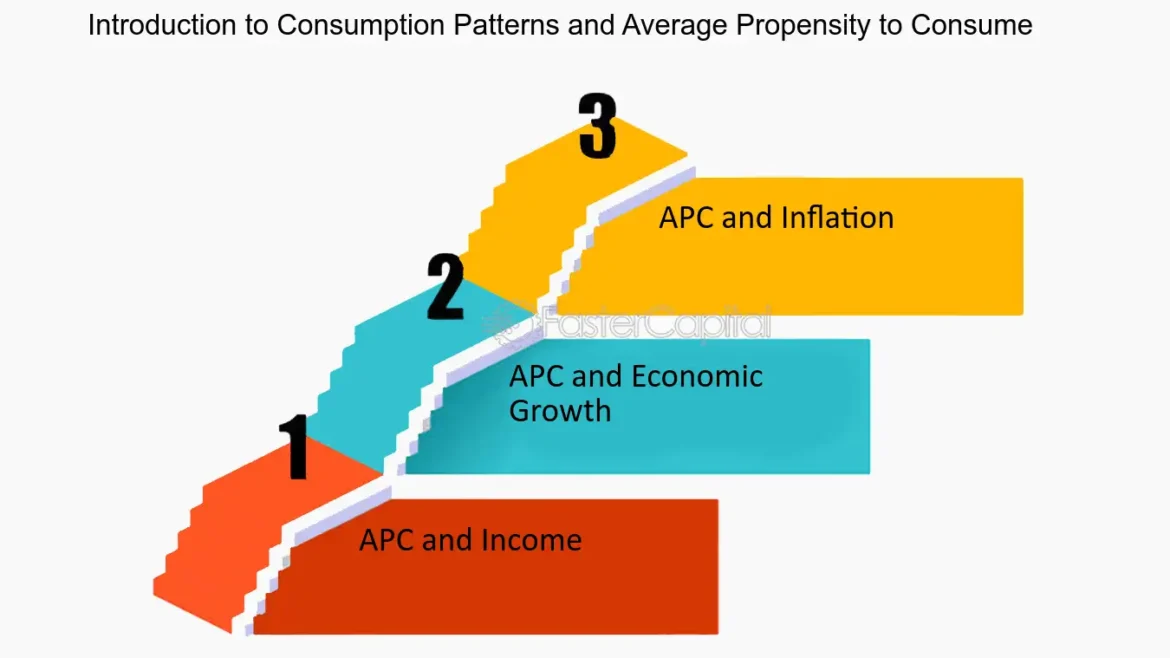In today’s consumer-driven world, the propensity to consume plays a crucial role in shaping our economy. It refers to the inclination or tendency of individuals to spend money on goods and services. Understanding consumer propensity is vital for businesses to create effective marketing strategies, predict sales, and make informed business decisions.
Consumer propensity is influenced by various factors, including income levels, social status, personal values, and external economic conditions. In this article, we will delve deeper into the concept of consumer propensity, its influencing factors, and its implications in different aspects of our lives.
Factors Influencing Consumer Propensity

Several factors can affect an individual’s propensity to consume. These factors can vary from person to person, and their impact on behavior may change over time. Here are some of the most prominent factors that influence consumer propensity:
Income Levels
Income levels play a significant role in determining the propensity to consume. Generally, as income increases, consumers tend to spend more on goods and services. However, the effect of income on propensity to consume can differ depending on one’s social and economic background. For example, individuals from lower-income groups may have a higher propensity to consume compared to those from higher-income groups, as they tend to have a stronger desire for upward social mobility and material possessions.
Social Status
Social status also has a considerable impact on consumer propensity. People with a higher social status tend to have a higher propensity to consume, as they have greater purchasing power and often seek products and services that reflect their social standing. On the other hand, individuals with a lower social status may have a lower propensity to consume due to limited financial resources and the need to prioritize basic necessities.
Personal Values
Personal values and beliefs can significantly influence consumer propensity. For instance, individuals who value material possessions and luxury items may have a higher propensity to consume compared to those who prioritize saving and frugal living. Additionally, personal values can also shape the types of products and services individuals are willing to spend their money on.
External Economic Conditions
External economic conditions such as inflation, unemployment rates, and interest rates can have a significant impact on consumer propensity. During times of economic uncertainty, individuals may have a lower propensity to consume as they become more cautious with their spending. On the other hand, during periods of economic stability and growth, consumers tend to have a higher propensity to consume, leading to increased demand for goods and services.
Propensity for Risk-Taking

Another factor that can influence consumer propensity is an individual’s propensity for risk-taking. People with a high propensity for risk-taking tend to be more impulsive and spontaneous in their buying decisions, which can lead to higher levels of consumption. On the other hand, individuals with a lower propensity for risk-taking may be more hesitant to spend their money, resulting in a lower propensity to consume.
Moreover, an individual’s propensity for risk-taking can also vary depending on their age and life stage. For example, young adults who are just starting their careers may have a higher propensity for risk-taking compared to older individuals who have more financial responsibilities and are more risk-averse.
Predicting Consumer Propensity

Predicting consumer propensity is crucial for businesses to create effective marketing strategies and make informed business decisions. One method used to predict consumer propensity is by using data analytics and statistical models. By analyzing consumer data, businesses can identify patterns and trends in consumer behavior, which can help them understand the factors that influence consumer propensity and predict future purchasing behavior.
Additionally, market research and surveys can also provide insights into consumer propensity. By collecting data on consumer preferences, attitudes, and intentions, businesses can gain a better understanding of their target audience and tailor their marketing efforts accordingly.
Propensity for Innovation Adoption

In today’s fast-paced world, businesses must stay ahead of the curve and continuously innovate to meet the changing needs and preferences of consumers. However, not all consumers have an equal propensity for innovation adoption. Some individuals are more open to trying new products and services, while others are more resistant to change.
Factors such as age, income, social status, and personal values can influence an individual’s propensity for innovation adoption. For example, younger individuals who value novelty and self-expression may have a higher propensity for innovation adoption compared to older individuals who prefer familiar and traditional products.
Understanding consumer propensity for innovation adoption is crucial for businesses to develop successful product launch strategies and target their marketing efforts effectively.
Behavioral Economics and Propensity
Behavioral economics is an interdisciplinary field that combines principles from psychology and economics to study how individuals make decisions and behave in economic situations. It challenges the traditional assumption that humans are rational decision-makers and instead focuses on understanding the underlying psychological and emotional factors that influence our choices.
In the context of consumer propensity, behavioral economics plays a significant role in understanding why individuals make certain purchasing decisions. For instance, the concept of loss aversion suggests that individuals are more likely to take risks to avoid potential losses than to achieve potential gains. This can have a significant impact on consumer propensity, as individuals may be more inclined to spend money on products and services that promise to mitigate potential losses rather than those that offer potential gains.
By applying insights from behavioral economics, businesses can better understand consumer behavior and develop strategies to influence consumer propensity.
Propensity Modeling in Marketing
Propensity modeling is a statistical technique used in marketing to predict consumer behavior and identify potential customers for a product or service. It involves analyzing a large dataset of consumer information and identifying patterns and trends to determine a customer’s likelihood to take a particular action, such as making a purchase.
Businesses use propensity modeling to segment their target audience and create personalized marketing campaigns. For example, by identifying consumers with a high propensity to purchase a particular product, businesses can target them with tailored messaging and offers to increase the likelihood of conversion.
Propensity modeling has become increasingly popular with the rise of big data and advanced analytics, allowing businesses to better understand their customers and improve their marketing efforts.
Neuroeconomic Insights into Propensity
Neuroeconomics is a relatively new field that combines neuroscience, psychology, and economics to study decision-making processes. By examining brain activity in response to economic stimuli, neuroeconomics aims to gain a deeper understanding of why individuals make certain choices and how they value different options.
In the context of consumer propensity, neuroeconomics provides valuable insights into the neural processes that influence our purchasing decisions. For example, research has shown that our brain’s reward center is activated when we are presented with attractive products or services, which can influence our propensity to purchase them.
Understanding these underlying neurological mechanisms can help businesses create more effective marketing strategies and better predict consumer behavior.
Propensity in Economic Development
Consumer propensity also plays a crucial role in economic development. In countries where consumer spending makes up a significant portion of the GDP, an increase in consumer propensity can lead to a boost in economic growth. Governments and policymakers often look at consumer propensity as an indicator of the overall health of the economy.
Moreover, consumer propensity can also have a significant impact on industries such as retail, tourism, and entertainment. An increase in consumer propensity can result in increased demand for these industries, leading to job creation and economic growth.
Global Trends in Propensity
As the world becomes more interconnected, global trends in consumer propensity are emerging. One significant trend is the shift towards conscious consumerism, where individuals prioritize purchasing products and services from socially responsible and environmentally sustainable companies. This trend has led to an increase in demand for eco-friendly and ethically sourced products, as well as a push for businesses to adopt sustainable practices.
Furthermore, advancements in technology have also influenced consumer propensity, with a growing preference for online shopping and digital payments. This trend has been accelerated by the COVID-19 pandemic, with more consumers turning to e-commerce and contactless transactions.
Conclusion
Consumer propensity is a complex concept that is influenced by various factors and can have far-reaching implications in our economy and society. By understanding the factors that influence consumer propensity and utilizing tools such as data analytics and neuroeconomics, businesses can better predict consumer behavior and create effective marketing strategies.
Moreover, governments and policymakers must also consider consumer propensity in their economic development plans to promote sustainable growth and improve the lives of their citizens. As global trends continue to shape consumer propensity, it will be crucial for businesses and policymakers to stay informed and adapt to the changing landscape to thrive in the ever-evolving consumer market.
Read more blogs : Universal Framework for E-Learning




